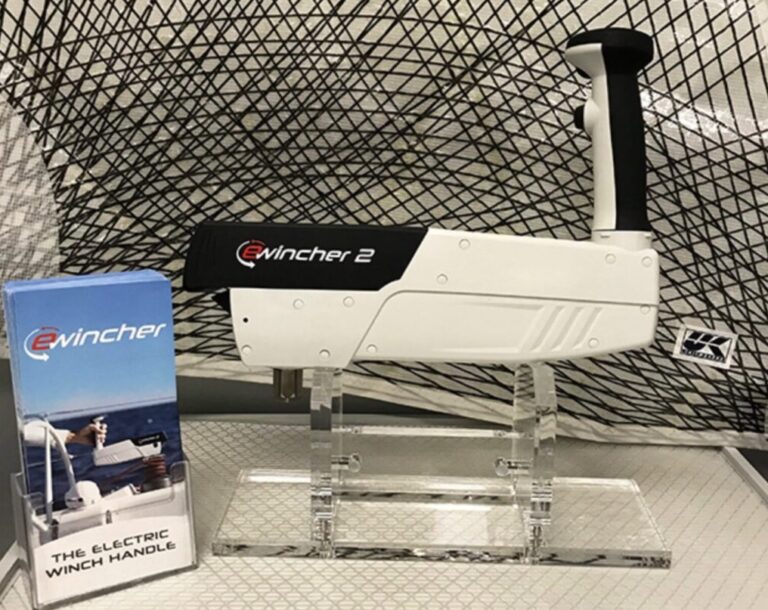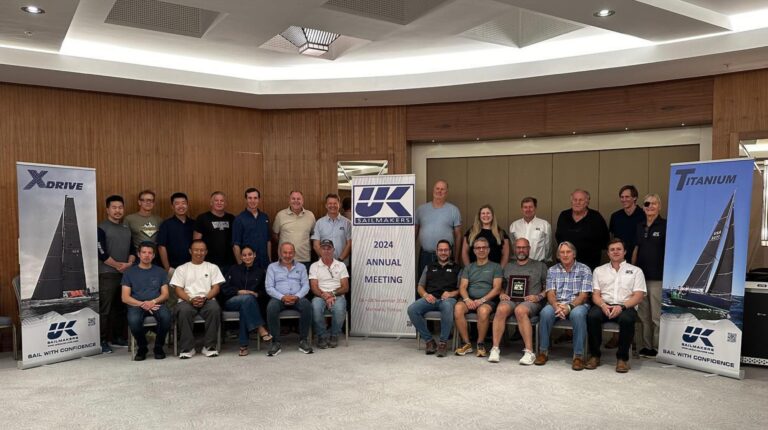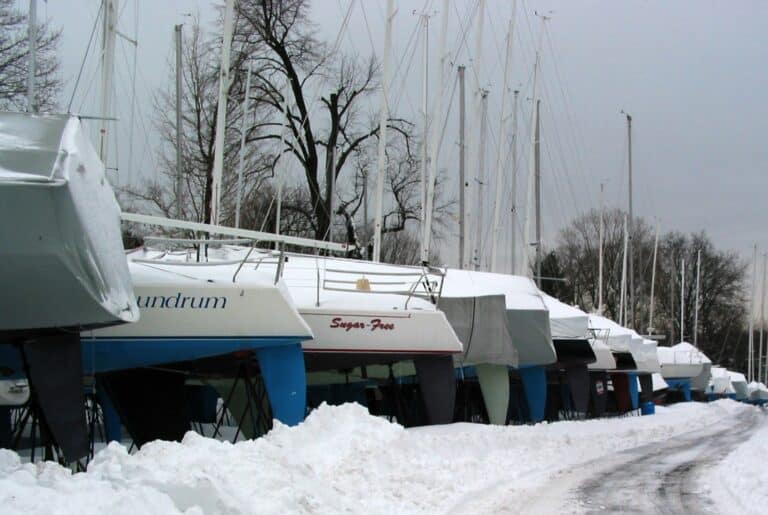UK Sailmakers Chicago (UKC) has been successful in developing competitive, championship-level sails for one-design classes in the USA. Currently, UKC is producing sails that are winning races at every level for the MC Scow, C Scow, E Scow, A Scow, and Flying Scot classes. This on-the-water success has been a collaborative effort between UKC’s Pat Considine (UK Sailmakers International’s head of design) and his brother Mike Considine, sales manager at UKC. Pat has been one of the industry’s leading sail designers since the early days of computer sail design. Mike has a keen eye for sail shape, sail trim, sail shape analysis.
Mike is also a competitive racer in various one-design and offshore boats, as well as a sought-after coach. Pat is no slouch on the racecourse either. The brothers have worked together for 30+ years developing race-winning sails for their offshore racing customers. They now are applying the same structured, data-driven approach used for offshore sails to one-design sailmaking and are sharing their successes throughout the UK Sailmakers global network.
Many one-design classes have their go-to sailmakers, but those sailmakers often get locked into one basic sail design and don’t make adjustments. Some are still using old-school sail panel patterns, whereby making any adjustments or modifications to their designs can be a guessing game. Pat and Mike’s objective is not merely to match the performance capabilities of other sailmakers’ sails but rather to design and produce better, faster sails. The result is that many UK Sailmakers’ one-design customers have had great results on the race course very quickly, sometimes immediately.

UK’s structured analytical process includes an assessment of all the factors that go into winning races: the boat itself, the available sail shape controls, how and where the boats are sailed, and current sail design thinking for the class. Only after all those factors are fully understood do the UK designers turn their attention to actual sail design.
UK starts the design process by taking their own measurements of the boat, its rig, and where all the sail controls are located. This data is then entered into the design software. The class’s rules on sail measurements and limitations also will be put into UK’s computer design program to ensure any new sail designs are class legal. Additionally, Pat will run the sail designs through an FSI finite element analysis to check stress, strain and flow, and see how the shapes will change at different wind speeds. He will use this analysis to make minor adjustments to shape design and panel layouts and assist in cloth selection. In the loft they will inspect and measure existing sails to establish a baseline from which design improvement concepts can be formulated.

UK also reviews recent photos of the boats on various points of sail and in different wind conditions. They aren’t looking at the beauty of a photo, but rather, they are looking at sail shapes, how the mast and boom bend, headstay and luff sags, leech twists, etc., all critical data points that help inform new designs.
Having a preliminary point-of-view on new sail direction for a class, UK then goes out and sails the boat evaluating various existing sail designs and putting the boat and sails through the full range of sail and rig adjustments. Usually, these on the water tests have onboard a knowledgeable, competitive sailor(s) from that class who sets and trims the sails to their standards. UK records sail shape data photographically after which Mike and Pat will analyze these shapes using UK’s Accumeasure sail shape analysis tool. To accurately evaluate these sails when creating the models in the design software, the digital concepts have draft stripes in the same locations as the existing sails for apple-to-apple comparisons. Again, the objective is to create better performing sails…not just replicating existing designs.

After learning all they can about the boat, the sail trim controls, rig tuning, class rules, and existing shapes, Pat will develop his initial designs on the computer…but this is unlikely to be their final design. To make sure sails are competitive out of the bag, UK Chicago starts by building and testing full-size prototypes of their designs. For each prototype concept, specific performance output goals are set. These performance criteria all can be evaluated on a computer, but UK believes the real test is how a sail performs on the water.
Some sailmakers get by with “creating” a new sail out of paper or inexpensive mylar to evaluate in their lofts. UK creates actual full-size prototypes. To do this economically, whereby multiple prototypes can be built and tested, UK makes these test sails out of quality laminates that may be outdated styles or have minor cosmetic flaws. Battens may be taped on rather than stitched into batten pockets, again to enable multiple prototypes to be built and tested economically. Then Mike takes the prototypes sailing!

Referring back to the specific performance criteria set for a particular prototype, Mike puts the sails through the full range of trim adjustments. He takes photos of the sails’ flying shapes and records performance data so he and Pat can compare the actual sail vs. the computer design using Accumeasure. After evaluating the sail shapes of these first-generation prototypes, Pat will make any adjustment to the design and then second-generation prototypes are built and fully tested in the same way.


This is not their last step. After going through the preliminary testing process, UK builds the first set of “production sails” to class specs for a final set of on-the-water testing. Again, they take pictures of the sails from on and off the boat, they put the sails through their full range of adjustments and do two- and three-boat testing. After this process they evaluate the sail shapes on the computer yet again and discuss the feel on the boat and the speed in two-boat testing. At that point, they make any final changes they feel necessary and either test another generation of prototype or, if satisfied, begin production of actual race sails for the class.
The final/ultimate test is on the racecourse.

This painstaking design/testing/refinement process may appear overly elaborative and structured, but by the time the sails are in the fleet they are championship level. This process has allowed UK to produce sails that have won regattas immediately. In John Porter’s first two events using his newly developed UK’s C Scow sails he won with impressive fashion. In UK’s MC Scow sails major debut regatta, their sails won five of the six races. And the sails are still fast, recently in the 2023 November MC Southeast Regional Championships regatta, Ron Baerwitz won the 47-boat fleet with 11 points to spare over second place.
Recognizing that sail design and materials will evolve, UK continues to analyze their one-design sails and their competitors’ sails to make sure UK Sailmakers’ one-design sails remain at the championship level. To learn more about UK’s ongoing one-design development process, contact Mike Considine at Mike@uksailmakers.com.






Impressive design stuff.
UK is doing everything right!
Well written and kudos to Pat and Mike for there efforts in advancing sail designs that significantly improve performance and outcomes!.